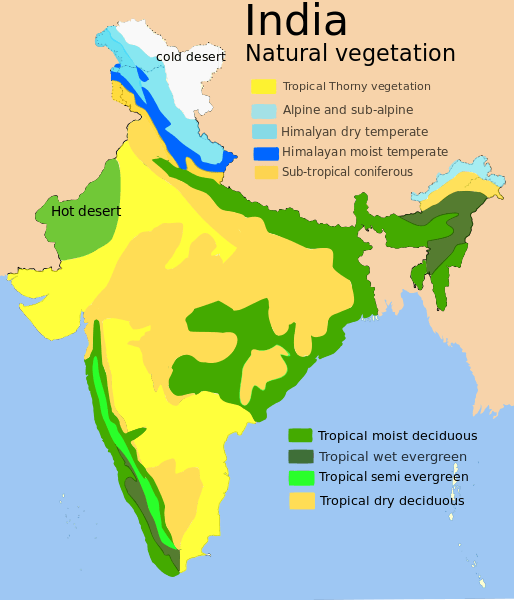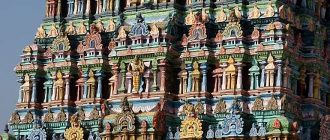Interested in learning about the diversity of natural vegetation in India? Do you want to understand what to expect in natural vegetation on a trip to India? Read our guide for more facts and information…
India is a country situated largely in tropical terrain. This location on the globe means that India is home to diverse temperatures and experiences high rainfall. These conditions make India highly suitable to the growth of forests. Most of the grasslands found in India are created out of the destruction of forests. India is home to a variety of forests due to the varying climate including arid and wet regions. It is also important to note that natural vegetation varies based on geography especially near imposing features such as the Himalaya mountain range.
Tropical Wet Evergreen Forests
Tropical wet evergreen forests are the natural vegetation in areas of India that receive an annual rainfall of over 250cm and experience a temperature of 25 to 30 degrees Celsius. The natural vegetation that forms tropical wet evergreen forests is found on the western face of the Western Ghats, in Assam, in Cachar, in parts of West Bengal and in Northern Canara. Tropical wet evergreen forests are characterized by a dense growth of very tall trees that often exceed more than 45m in height. Herbs and grasses are rare forms of vegetation in these forests as the carpet layer does not receive enough light to grow because of the dense canopy.
Tropical Moist Semi Evergreen Forests
Tropical moist semi evergreen forests comprise the natural vegetation in areas of 25 to 32 degrees in temperature and 200 to 250cm of rainfall annually. These forests are found along the Western Ghats, in Assam, in Ossira, and in the Andman Islands. This form of natural vegetation is more developed in Northern India than in the South. This natural vegetation is marked by a dense growth of evergreens intermixed with deciduous trees that range from 25 to 30m in height. In these regions shrubs are common as is a thick carpet layer.
Littoral and Swamp Forests
Littoral and swamp forests are found in wet marshy areas, river deltas, saline or swampy areas and on the coasts. The most common place for this vegetation is the large rivers of the east and the deltas of the west of India. This vegetation is marked by a dominance of halophytic evergreen plants of varying height and varying density.
Himalayan Dry Temperate Forests
In India a very distinct region is the area near the Himalaya mountain range. This region of India is characterized by low rainfall which limits the natural vegetation and the diversity of species. These areas are dominated by the evergreen oaks and conifer trees in both the east and the west. There is limited undergrowth in the region however the vegetation is mostly shrubs. In the eastern part of the region near the Himalayas the climate is wetter leading to some variance in vegetation while in the west the climate is drier.





